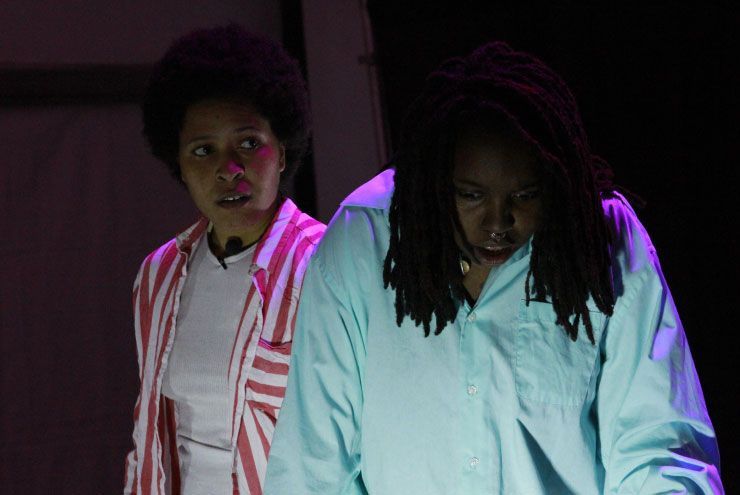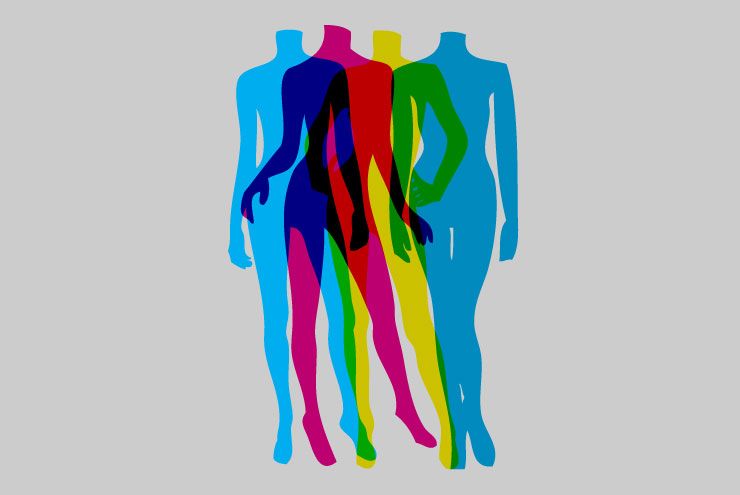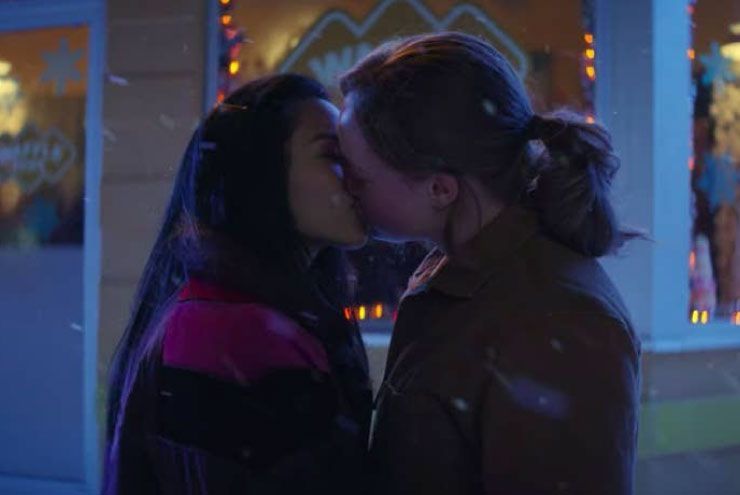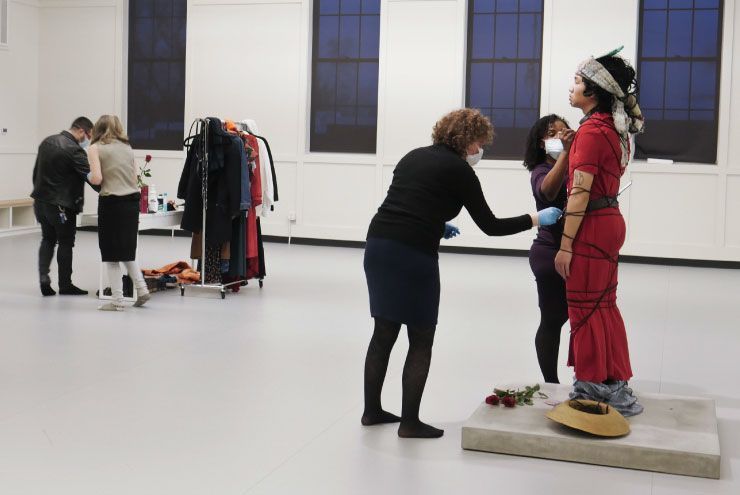By Kelly M. Marshall
This year, OUTsider Fest celebrated its fifth year with enthusiasm, collaborative spirit, and queer BIPOC avant-garde delights. Artistic director Curran Nault and president PJ Raval opened their home to morning Conferences on the Couch, casual round-table panel discussions of the previous night’s performances and exhibitions, and created a space for the different artists to discuss their views and work through the lenses of different academically salient topics. In the afternoon and on into the evening, performative works ranging from theatre and film, music, performance art, comedy, storytelling, poetry, and dance were showcased, with a heavy emphasis on elevating national queer and trans bipoc artists.
The atmosphere of OUTsider Fest was convivial and rife with connection, laughter, tears, pain, sexual tension, warmth, shame, and vulnerability. The confluence of queer artists in a queer space provided an atmosphere of encouragement and allowing that was palpable.
I approached OUTsider artists m. lamar, Nia & Ness, and Jesús Valles, with questions about their individual creative processes, how that work facilitates spaces of healing for them as queer artists of color, and the audience healing that comes through sharing that work.
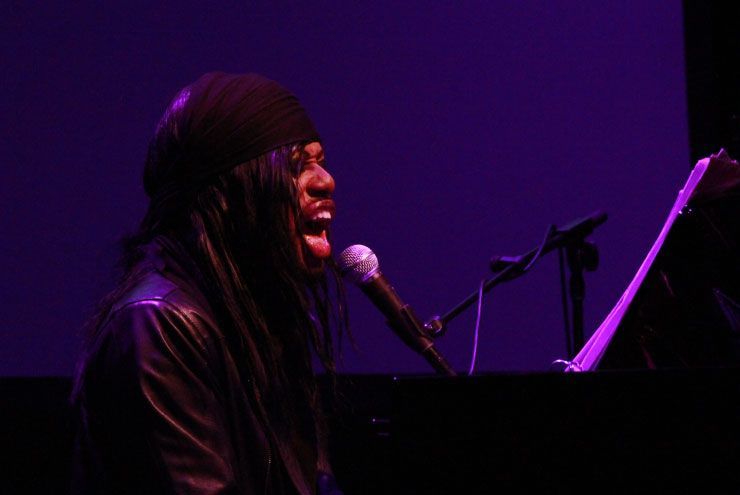
OUTsider Fest artist m. lamar. Photo courtesy OUTsider Fest.
“White supremacy tends to ignore all of this Black scholarship that’s happened over the last 50 or so years around dismantling white supremacy—there’s all of this very rigorous scholarly work,” m. lamar shares. “And white supremacy just has to ignore all of that to continue to perpetuate this narrative. And now you have this new Trump era, which is surrounded by an atmosphere of very uneducated and not very well-read people voting for this white supremacist. So, I think the work is ultimately always trying to address the history and how it affects now. James Baldwin is quoted as saying, ‘History is not the past, it’s the present.’ I think that through plantation narrative is the position of Black people in the mind. Again, this is all in the mind of white supremacy. And I think the job of any kind of free Black person is to not internalize the image of themselves as sort of put into that culture by white people. The liberation really comes into the level of the mind and the spirit, not the body. You’re thinking differently about yourself and having a critical apparatus in place to analyze the ways in which you’ve been made to believe that you’re certain things and that you’re supposed to behave in certain ways. Ultimately, I think the goal of my work is in trying to take a torch of history and moving it forward. That’s all, really.”
The experience of being able to put words to the undefinable, to share the unspeakable, to illuminate a pain that can only be understood by some, resulted in an atmosphere of remarkable emotional release. However, there was a sense of the work never really being finished, merely evolving.
“I rarely hear people talking about themselves and saying ‘This happened to me,’ other than online or on social media, and I think more people (if they have the ability to do that and it’s not going to harm them) should do that,” Ness says. “But I just feel like ‘Okay, we did this work here, we have to keep going. We have to keep pushing—no matter how afraid I am, or how tired I am, or how nervous I am, we have to do this work.’ The feeling I have when we’re done with a performance is an eagerness for continuation. I will have that feeling of openness and release after a performance, like, ‘Good, yes, I’ve cleared some shit,’ but it goes away very quickly. And after that, it would be great if we could go into the world and receive love and openness and all that from people in a whole new way. But because we don’t get that, very quickly it becomes a continuous process of being and feeling more open now and receiving even more shit. It’s a process of constantly clearing just to take on more, and so on. It doesn’t stop. While performing, I realize all the shit I’ve been burying, and that’s what comes up, and that’s why afterwards, I feel so worn out, because I’m like, ‘Oh shit, I’ve been burying all of this pain deep inside me, and here it is.’”
We talked about how art is a pathway toward addressing issues—that are hard to directly address—in a nuanced way.
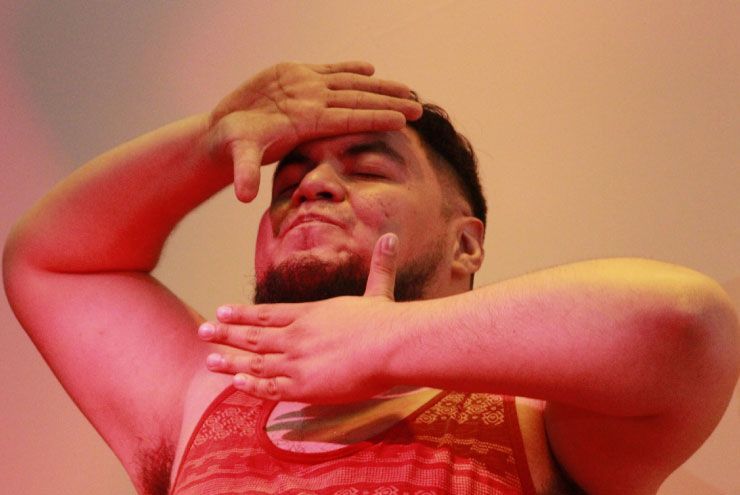
OUTsider artist Jesús Valles. Photo courtesy OUTsider Fest.
“Healing is non-linear, and healing does not mean an end to trauma, but rather a way to work and cope and walk with it,” Valles says. “For many of us, theatre is not the place to find answers, but rather a laboratory for designing better questions about how we live and how we move in the world, and I think ultimately, how to die best. [It asks questions about] how to engage the world and the people that we love in a way that is genuine and feels like we are fighting for something—that we’re giving voice to something because it’s necessary and because some of our lives depend on it.”
Many of the artists expressed a yearning to transcend, to move through and beyond their experiences that had been shaped by white supremacy, capitalist patriarchy, and colonialism into new places and worlds without those experiences.
“Part of the theme of [my album] Lordship and Bondage is that Sun Ra was spending his entire life living in this very evolved place,” m. lamar says. “And this place was one that conceptually intersected with outer space and mind and the spirit and emotion and feeling. Cecil Taylor, who died last year and whom I believe was one of the greatest pianists who has ever lived, was existing in this other sphere and transcendence and was living in expression and emotion, beauty and sensation. My obsession in the new piece, Lordship and Bondage, is with these philosophers who are also musicians—it’s about this philosophical place in which they exist, which is about levels of Black transcendence. Ultimately, I’m interested in this Black transcendence, but I think in order to get there, one has to unpack a bunch of bullshit about white supremacy and legacies of slavery that persist.”
“A question that I always ask myself when I’m performing (Un)Documents is: ‘How are you going to live with the discomfort that the very systems and things that have protected you are also the very things that are putting you and your communities [at risk] and that might eventually threaten to destroy you as well?,’” Valles explains. “I think for the audience, my biggest question is: ‘What are you willing to do to help to dismantle these systems? What are you willing to do to challenge these systems? And I think there is a space that asks the other members of the audience, ‘How do we heal from the trauma of empire? How do we heal from the trauma of citizenship? What does that healing mean?’”
In short, Austin’s OUTsider Fest will blow your mind, whatever your background. As a white transmasculine queer, it short-circuited my brain and exposed me to many layers of my own previously hidden casual racism, white guilt, and stifling levels of white fragility that have kept me complicit in multidimensional levels of systemic oppression towards my BIPOC queer and trans family. But you have to feel it to heal it, and exposing yourself to and uplifting these incredible artists is a damn good way to start.
For more information on OUTsider Fest, visit outsiderfest.org.


